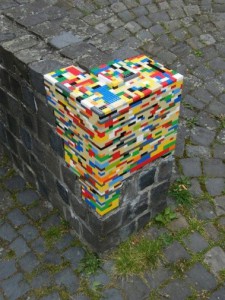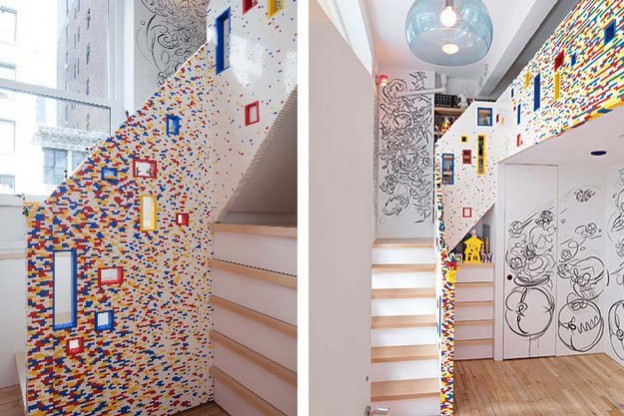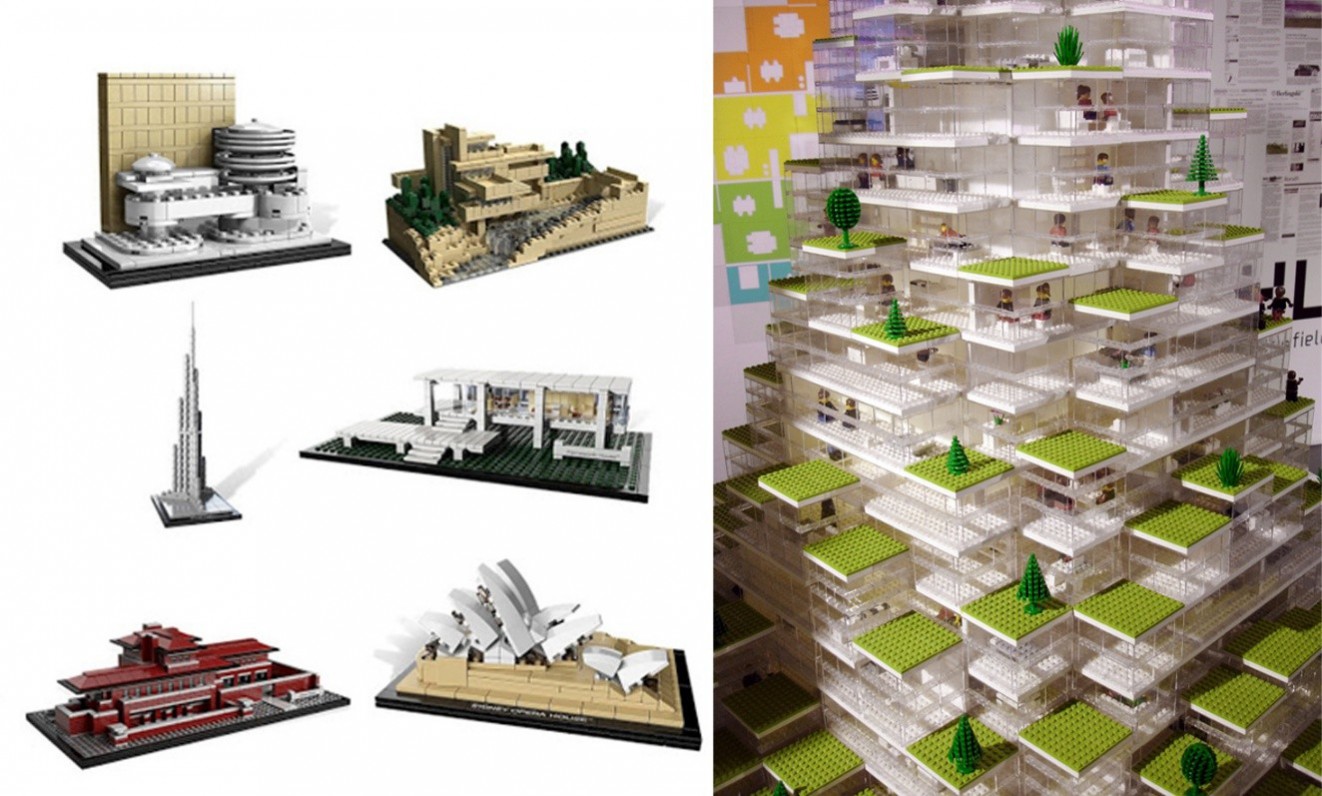I was inspired to create this blog as I was browsing design websites and I came across the most unusual and fun sounding job advert in Dezeen, for concept artists for Lego. I’m sure you would all agree that this sounds like an amazing job! I thought it would be interesting to research the impact that Lego has had on architecture and interiors.
As interior designers and creatives it is always important for us to explore new design concepts and ways to push the boundaries of design. Lego was, and still is predominantly a children’s toy however, it is a building block which can be used as a tool to overcome design challenges and it can also create an unusual aesthetic.
Lego now has a cult following, being one of the most successful toys in history however the ways it can be used are forever being tested in the real world, as the design of the blocks themselves reflects the basic building principles on brick and block work of real building methods.
There are many instances of Lego block being used to repair old crumbling brick work as seen here in Rome (Left). In this instance the Lego is used to replicate the mortar between the brickwork however the Lego can also be used to replace the brick work itself (right). This suggests that Lego blocks are easy to use, affective at preserving structure and affordable to use as well as adding some colour to the grey stonework.
The most notable project of this type in the UK is the TV presenter; James May who endeavoured to create a whole house and its contents with Lego. The only non-Lego elements were the wooden frames to support the walls.
The implication of Lego can be used within an interior to create a dramatic impact. Colour, shape and the possibilities for implementation are endless, consequently, I am quite surprised there are not more interior designers using this method within their design schemes.
Lego was used to change the interior space of this small New York apartment in order to accommodate a growing family. Working with Lego artist Sean Kenney I- Beam Design creating this brilliant new wall and staircase. The design works with the existing style and the colours of the apartment to create a seamless transition between conventional building methods and Lego brick. The cost and time period this took to place and build would have been considerably less than conventional methods.
Lego can even be used by architects to both recreate classic pieces of architecture but also to present future building proposals in 3D format. Left is the Lego architecture collection featuring pieces such as Falling Water and the Sydney Opera House. These are more likely to adorn the shelves of middle age professionals than children, I know that I would proudly build and display any of these pieces. On the right is an architectural model from BIG design agency. Known for their experimental and bold approach they created a 1.50 model from 250,000 Lego bricks to display their proposed design for a proposal for a mixed use development in Copenhagen.
All seriousness aside Lego can be used as an interesting design tool to create unusual furniture and interior features that could prove to be both a feature and an asset to a project. The possibilities of using not only the Lego brick itself but the iconic design can be utilised effectively to produce quirky design concepts.
References
Dezeen. (2014). Job of the week. [Online]. Available from – http://www.dezeenjobs.com/concept-designers-lego/ [Accessed: 1.4.14]
The Telegraph. (2008). Lego bricks used to repair crumbling walls. [Online]. Available from – http://www.telegraph.co.uk/news/newstopics/howaboutthat/2460091/Lego-bricks-used-to-repair-crumbling-walls.html [Accessed: 1.4.14]
The Telegraph. (2008). Lego bricks used to repair crumbling walls. [Online]. Available from – http://www.telegraph.co.uk/news/newstopics/howaboutthat/2460091/Lego-bricks-used-to-repair-crumbling-walls.html [Accessed: 1.4.14]
Baker, Natalie. (2010). Lego: Patching up a wall near you (via Wired –Design magazine, online and print). [Online] July 06th 2010. Available from http://www.wired.co.uk/magazine/archive/2010/08/play/lego-patching-up-a-wall-near-you
The Brothers Brick. (2009). James May’s LEGO house destined for ruins. [Online]. Available from – http://www.brothers-brick.com/2009/09/21/james-mays-lego-house-destined-for-ruins/ [Accessed: 1.4.14]
Travis Dubreui. (2012). New York magazine Art Department [Online]. Available from http://inhabitat.com/nyc/i-beam-design-uses-20000-legos-to-create-a-playfully-pixelated-new-york-city-apartment/i-beam-lego-bricks-renovation-2/?extend=1 [Accessed: 1.4.14]
Human’s scribbles (2012). LEGO Architecture: Architect Series [Online]. Available from http://humanscribbles.blogspot.co.uk/2012/03/lego-architecture.html [Accessed: 1.4.14]
Human’s scribbles (2012). BIG’s LEGO Towers at Storefront [Online]. Available from http://humanscribbles.blogspot.co.uk/2012/03/lego-architecture.html [Accessed: 1.4.14]
Design top news (2010). Thierry Nahon & Philippe Landecker, LunaBlocks [Online]. Available from http://www.designtopnews.com/furniture-design/unique-interior-furniture-from-tetris-idea-lunablocks-giant-lego/ [Accessed: 1.4.14]
Momoge (2010). Lego-storage-units-4 [Online]. Available from http://momoge.com/giant-lego-bricks-unconventional-but-fun-storage-solution/ [Accessed: 1.4.14]
Tan, Kay (n.d). Lego Table [Online]. Available from http://www.hongkiat.com/blog/35-lego-mega-constructions-you-probably-havent-seen-before/ [Accessed: 1.4.14]








